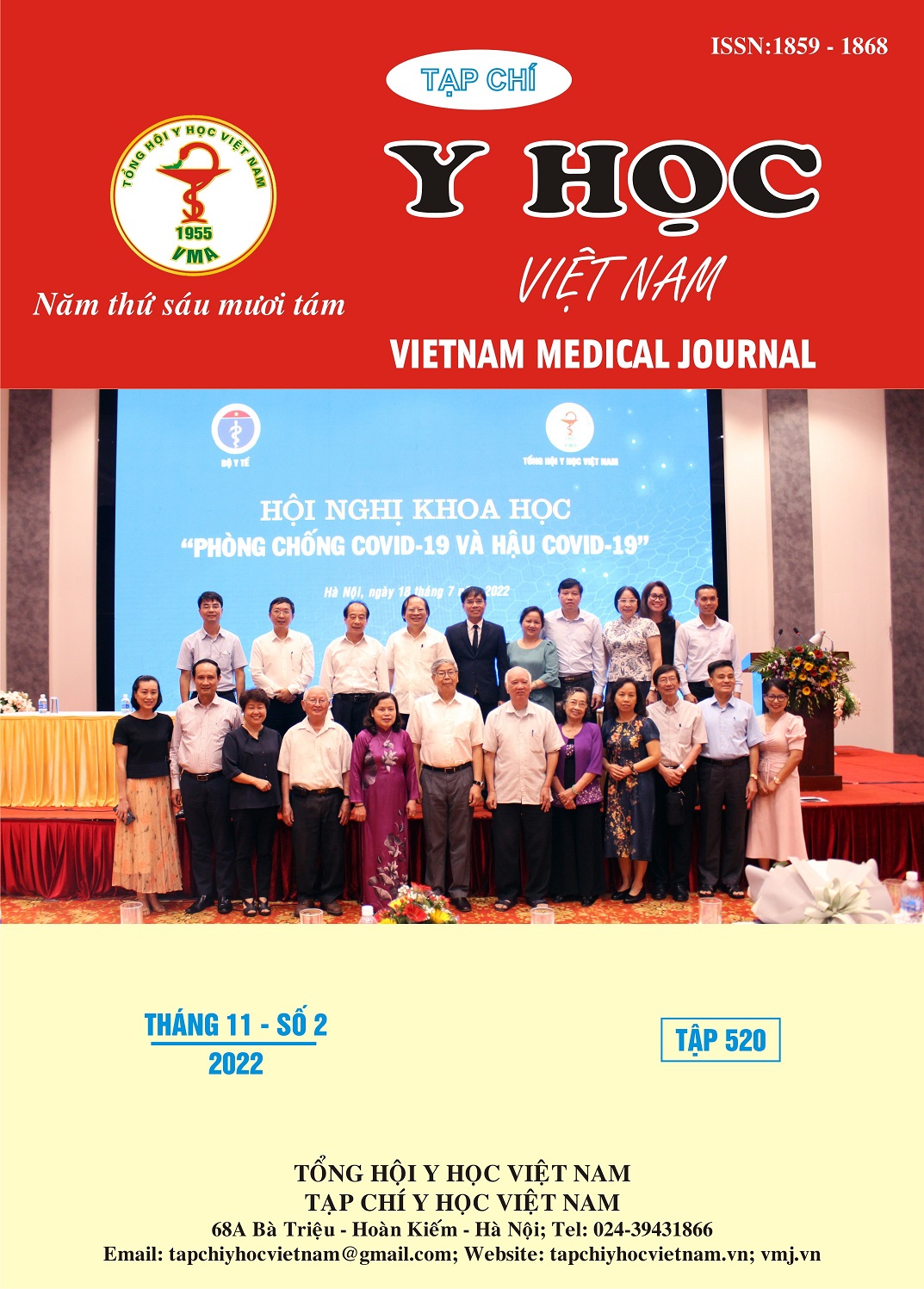SO SÁNH KẾT QUẢ KHUYẾN CÁO KHÁNG SINH HỢP LÍ THEO CÔNG CỤ DỰ ĐOÁN NEOS CỦA KAISER VỚI HƯỚNG DẪN XỬ TRÍ CDC 2010 Ở TRẺ SƠ SINH ≥ 34 TUẦN TUỔI THAI NGHI NHIỄM KHUẨN HUYẾT SỚM ĐƯỢC SANH RA TỪ BÀ MẸ VIÊM MÀNG ỐI LÂM SÀNG
Nội dung chính của bài viết
Tóm tắt
Đặt vấn đề: Viêm màng ối là tiêu chí được sử dụng để chỉ định kháng sinh cho trẻ ngay sau sanh bất kể có triệu chứng lâm sàng hay không. Tuy nhiên, chẩn đoán viêm màng ối mô học khó đạt được. Tiêu chuẩn “viêm màng ối lâm sàng” mang tính chủ quan, dẫn đến nhiều trẻ khoẻ mạnh bị chỉ định kháng sinh không cần thiết. Mục tiêu: So sánh tỷ lệ khuyến cáo kháng sinh hợp lí theo hướng dẫn CDC 2010 với công cụ dự đoán NEOS của Kaiser ở trẻ sơ sinh ≥34 tuần tuổi thai nghi nhiễm khuẩn huyết sớm được sanh ra từ bà mẹ viêm màng ối lâm sàng. Phương pháp nghiên cứu: Theo dõi tiến cứu. Trẻ sơ sinh ≥34 tuần tuổi thai được sanh từ những bà mẹ với chẩn đoán viêm màng ối lâm sàng tại khoa sản bệnh viện Nguyễn Đình Chiểu từ 1/11/2021 đến 30/4/2022. Quan sát và ghi nhận đặc điểm bà mẹ, lâm sàng của trẻ, ghi nhận khuyến cáo kháng sinh, không kháng sinh dựa vào công cụ dự đoán NEOS của Kaiser và hướng dẫn CDC 2010. Kết quả:39 trẻ thoả tiêu chuẩn chọn mẫu, tất cả đều cấy máu âm tính. Hướng dẫn của CDC 2010 khuyến cáo kháng sinh cho 39/39 (100%) trẻ, trong khi công cụ dự đoán NEOS của Kaiser khuyến cáo kháng sinh cho 14/39 (35,9%). Trong đó, chỉ có 5/39 (12,8%) được chẩn đoán là “có khả năng nhiễm khuẩn huyết sơ sinh sớm” và đều được cả hai khuyến cáo kháng sinh ngay sau sanh. Kết luận: Trên những trẻ được sanh ra từ bà mẹ có chẩn đoán viêm màng ối lâm sàng, sử dụng công cụ dự đoán NEOS của Kaiser giúp giảm 64,1% trẻ được chỉ định sử dụng kháng sinh không cần thiết so với hướng dẫn của CDC 2010. Công cụ vẫn có thể được áp dụng một cách an toàn trên những đối tượng này vì theo kết quả nghiên cứu không có trẻ nào bị “bỏ sót”.
Chi tiết bài viết
Từ khóa
Nhiễm khuẩn huyết sơ sinh sớm, công cụ dự đoán nhiễm khuẩn huyết sơ sinh sớm, hướng dẫn của CDC 2010, viêm màng ối.
Tài liệu tham khảo
2. Escobar GJ, Puopolo KM, Wi S, et al. Stratification of risk of early-onset sepsis in newborns ≥ 34 weeks’ gestation. Pediatrics 2014; 133: pp 30–36.
3. Gibbs, Ronald S.; Duff, Patrick. Progress in pathogenesis and management of clinical intraamniotic infection. American Journal of Obstetrics and Gynecology, 164(5), 1317–1326. doi:10.1016/0002-9378(91)90707-X
4. K. M. Puopolo, D. Draper, S. Wi, et al. Estimating the Probability of Neonatal Early-Onset Infection on the Basis of Maternal Risk Factors, Pediatrics, Vol. 128.
5. Modi N, Dore CJ, Saraswatula A, Richards M, Bamford KB, Coello R, et al. A case definition for National and International neonatal bloodstream infection surveillance. Arch Dis Child Fetal Neonatal Ed. 2009;94(1): F8–12.
6. Money N, Newman J, Demissie S, Roth P, Blau J. Anti-microbial stewardship: antibiotic use in well-appearing term neonates born to mothers with chorioamnionitis. J Perinatol. 2017 Dec;37(12): pp1304-1309.
7. Puopolo, Karen M., et al. Management of neonates born at≥ 35 0/7 weeks’ gestation with suspected or proven early-onset bacterial sepsis. Pediatrics, 2018, 142.6.
8. Verani JR, McGee L, Schrag SJ; Division of Bacterial Diseases, National Center for Immunization and Respiratory Diseases, Centers for Disease Control and Prevention (CDC). Prevention of perinatal group B streptococcal disease--revised guidelines from CDC, 2010. MMWR Recomm Rep. 2010 Nov 19;59(RR-10):1-36.


